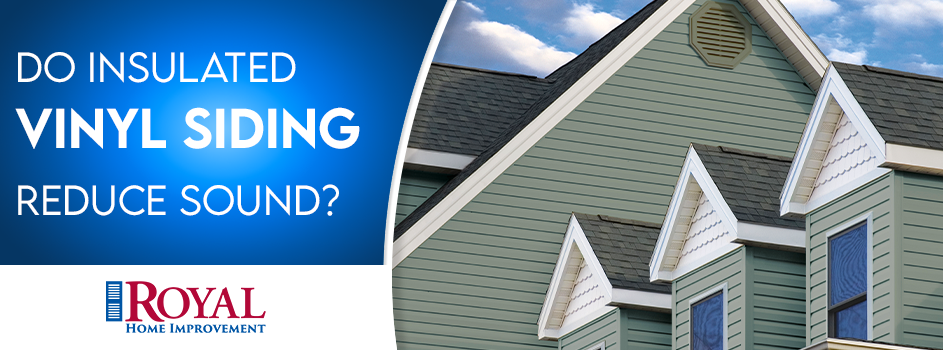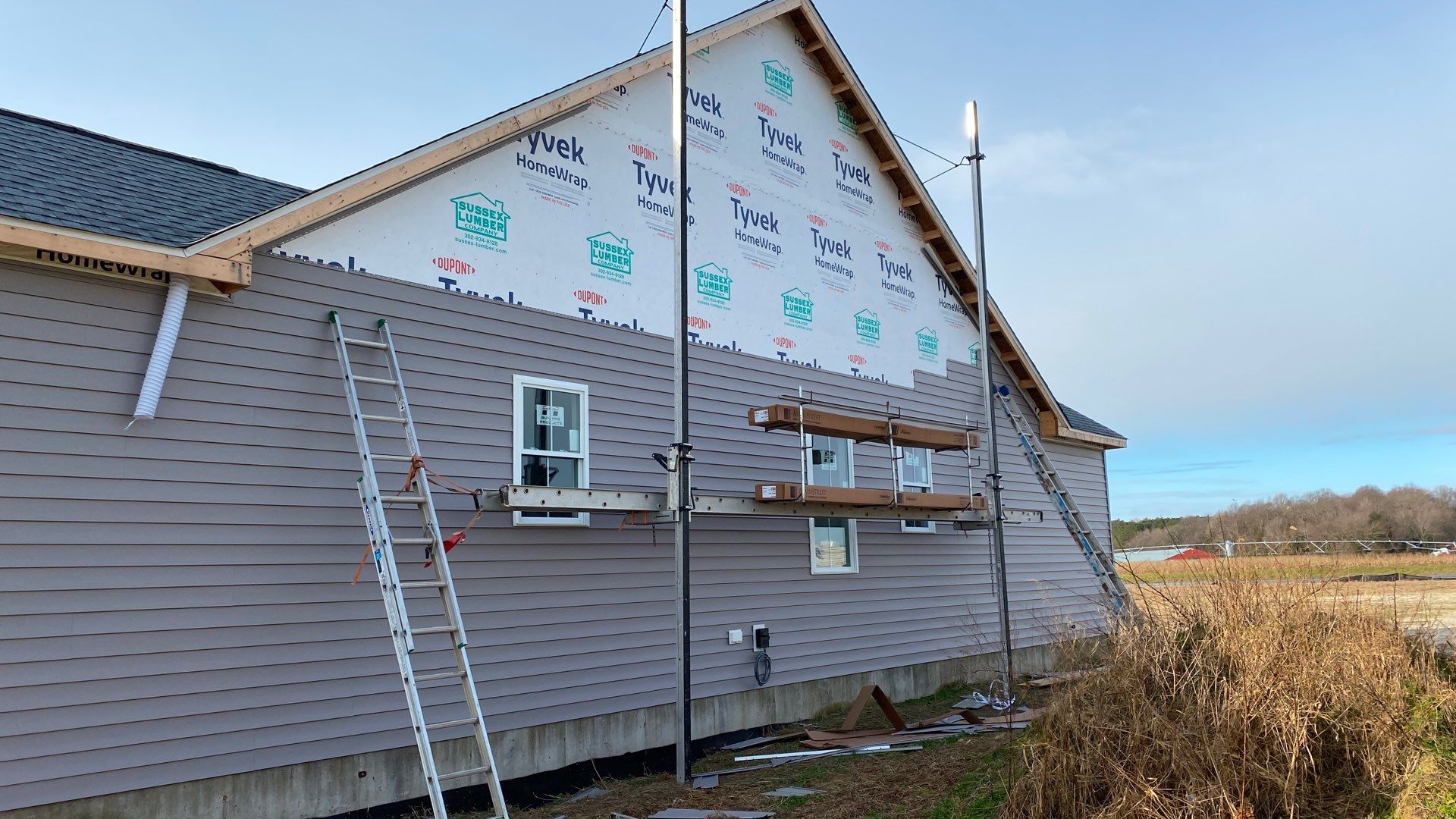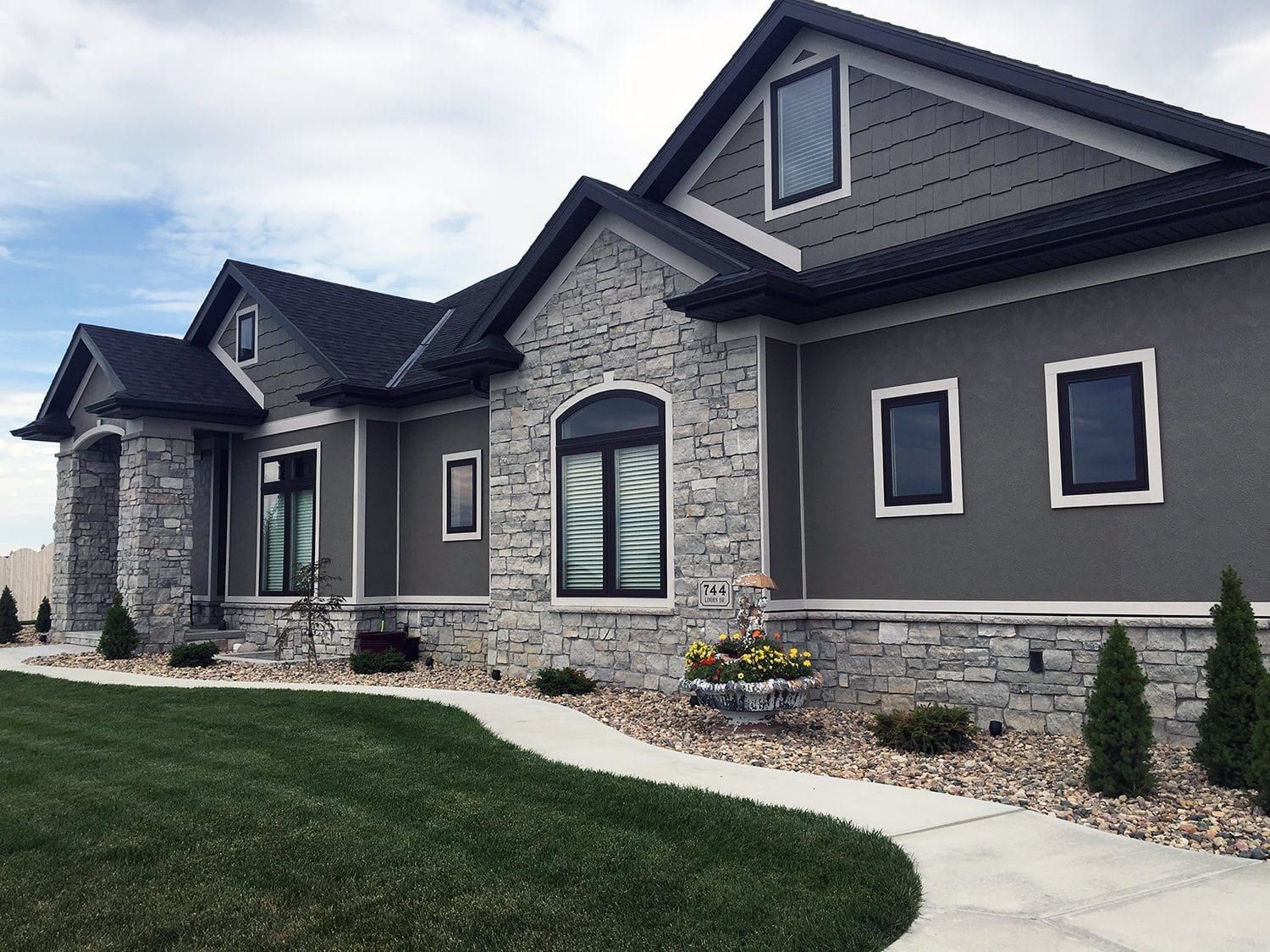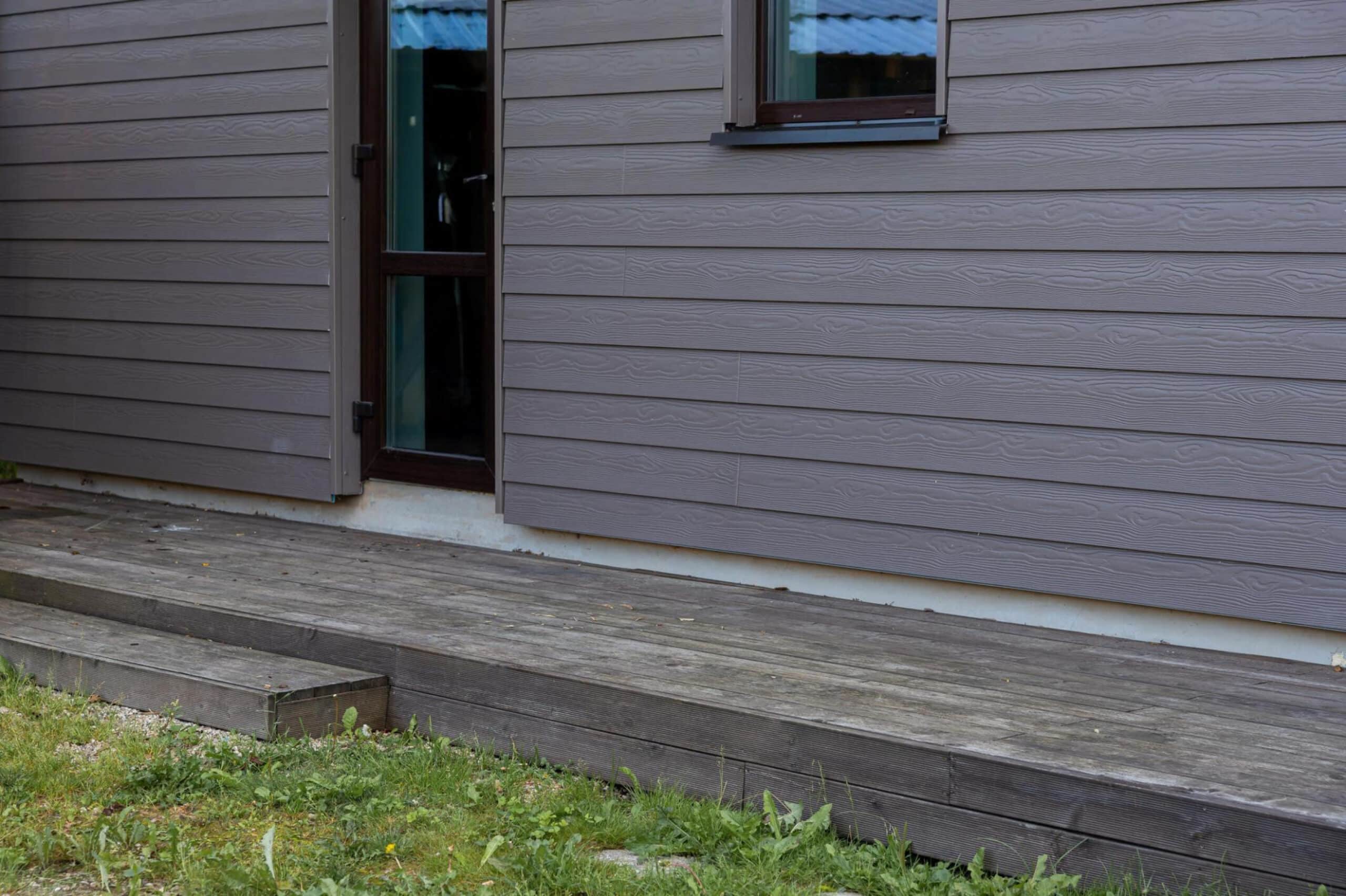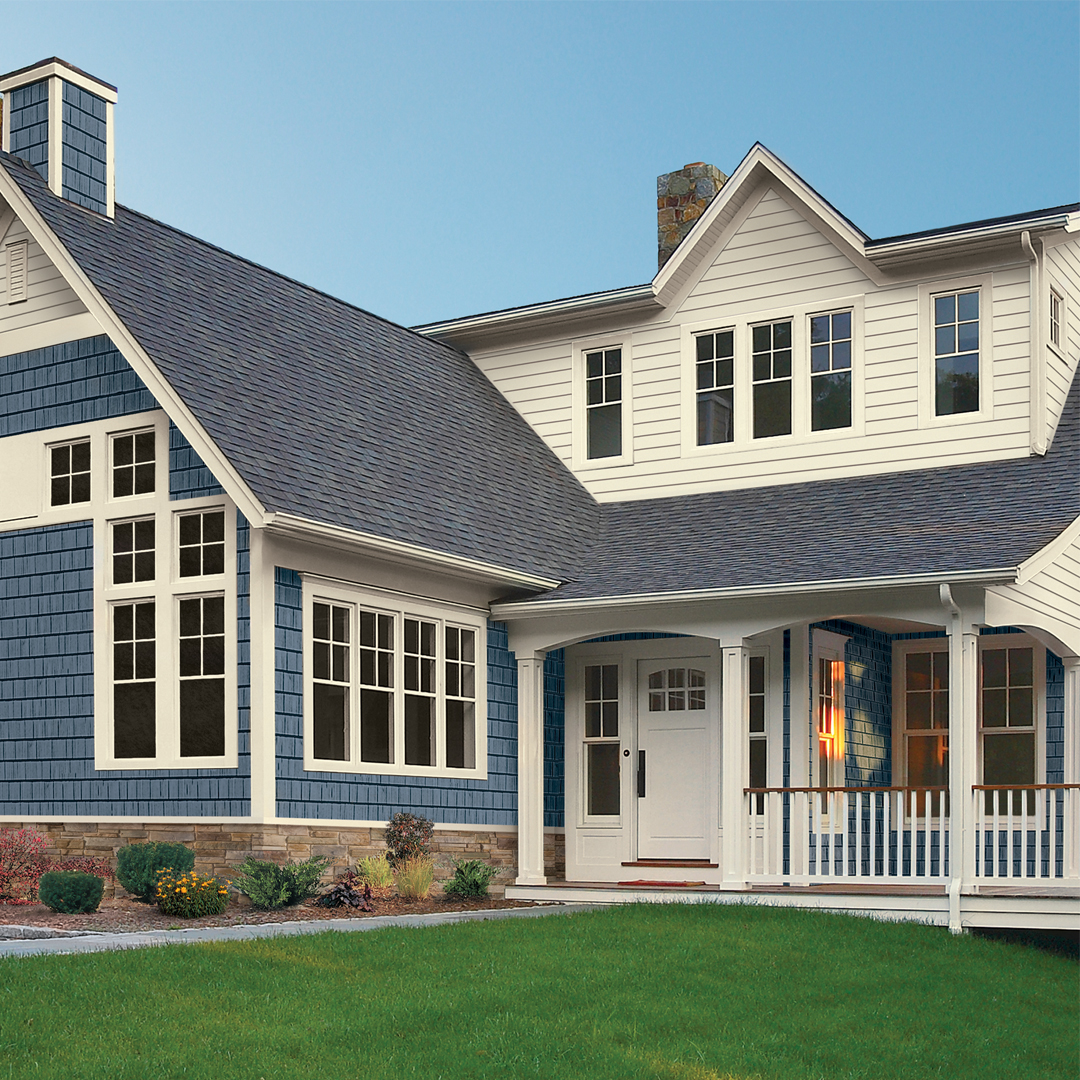Insulated Siding Cost Per Square Foot
Insulated siding cost per square foot varies significantly depending on several factors. Understanding these factors is crucial for budgeting your home improvement project. This guide explores the average costs of different insulated siding materials, installation expenses, and the long-term return on investment (ROI) associated with increased energy efficiency. We’ll delve into the properties of various materials, such as vinyl, fiber cement, and metal, comparing their durability, maintenance needs, and energy-saving capabilities. By the end, you’ll have a clearer picture of the total cost and the potential benefits of upgrading your home’s exterior with insulated siding.
From initial material selection to the final installation, we will break down the costs involved in each step of the process. We’ll examine how factors like geographic location, project complexity, and the chosen installer can influence the overall expense. Furthermore, we’ll explore how to calculate the potential energy savings and determine the ROI, helping you make an informed decision that aligns with your budget and long-term goals.
Average Costs
The cost of insulated siding varies significantly depending on several factors, including the material chosen, its thickness, the complexity of the installation, and regional labor rates. Understanding the typical cost range for different materials can help homeowners budget effectively for their exterior renovation projects. This section provides a breakdown of average costs per square foot for common insulated siding options.
It’s important to remember that these are average costs, and the actual price you pay may differ based on the specifics of your project. Always obtain multiple quotes from reputable contractors to ensure you’re getting a fair price.
Insulated Siding Cost Comparison by Material
The following table summarizes the average cost ranges for various insulated siding materials. These figures are based on national averages and may vary regionally. Always consult local contractors for accurate pricing in your area.
| Material Type | Cost Range ($/sq ft) | Pros | Cons |
|---|---|---|---|
| Vinyl | $3 – $8 | Affordable, low maintenance, variety of colors and styles, easy installation. | Can be damaged by impact, may fade over time, less durable than other options. |
| Fiber Cement | $7 – $15 | Durable, fire-resistant, low maintenance, resists pests and rot, realistic wood appearance options. | More expensive than vinyl, heavier and more difficult to install, can be brittle. |
| Metal (Aluminum or Steel) | $8 – $18 | Extremely durable, long lifespan, fire-resistant, low maintenance, energy-efficient. | Can dent, susceptible to scratches, may require specialized installation techniques. |
Factors Influencing Cost Variations
Several factors can significantly influence the final cost of insulated siding, even within the same material type. Understanding these factors allows for better budgeting and informed decision-making.
Thickness: Thicker siding generally costs more but offers superior insulation and durability. For example, a thicker vinyl siding panel will provide better energy efficiency and weather protection compared to a thinner one, justifying the higher cost. Similarly, thicker fiber cement boards offer increased strength and resistance to damage.
Color and Features: Specialty colors and finishes, such as textured surfaces or wood grain patterns, often command a premium price. Certain features, such as built-in insulation or enhanced weather resistance, also increase the cost. For instance, a fiber cement siding with a custom color might cost significantly more than a standard gray option. Similarly, metal siding with a specialized coating for enhanced durability will typically have a higher price tag.
Installation Complexity: The complexity of the installation significantly impacts the overall cost. Projects requiring extensive preparation work, such as removing old siding or addressing complex architectural details, will naturally be more expensive. For example, a house with many dormers or intricate trim work will require more labor, leading to a higher installation cost compared to a simpler, rectangular structure.
Material Types and Their Properties
Choosing the right insulated siding material significantly impacts the longevity, energy efficiency, and overall cost of your home improvement project. Several popular options exist, each with its own unique set of advantages and disadvantages. Understanding these differences is crucial for making an informed decision. This section details the characteristics of common insulated siding materials, comparing their durability, energy efficiency, and maintenance needs.
Vinyl Insulated Siding
Vinyl siding is a widely popular choice due to its affordability and ease of installation. It’s typically composed of polyvinyl chloride (PVC), often incorporating a foam insulation layer for enhanced energy efficiency. The color is integrated into the material, minimizing the need for repainting. However, vinyl can be susceptible to damage from impact and extreme temperatures, potentially leading to warping or cracking. Its lifespan is generally shorter compared to other materials.
- Advantages: Relatively inexpensive, easy to install, low maintenance, wide variety of colors and styles available.
- Disadvantages: Prone to damage from impact, can warp or crack in extreme temperatures, shorter lifespan compared to other options, less durable than fiber cement or metal.
Fiber Cement Insulated Siding
Fiber cement siding offers superior durability and longevity compared to vinyl. Made from a composite of cement, cellulose fibers, and other additives, it’s highly resistant to fire, rot, and insect infestation. While more expensive than vinyl, its resilience and long lifespan often justify the higher initial cost. Fiber cement can be painted, offering greater design flexibility. However, it’s heavier than vinyl and requires professional installation.
- Advantages: Extremely durable, fire-resistant, rot-resistant, insect-resistant, long lifespan, paintable.
- Disadvantages: More expensive than vinyl, heavier and more difficult to install, requires professional installation, can be brittle and prone to cracking if mishandled during installation.
Metal Insulated Siding
Metal siding, often made of aluminum or steel, is known for its exceptional durability and resistance to damage from extreme weather conditions. It’s highly resistant to fire, insects, and rot, offering a very long lifespan. Furthermore, metal siding is typically energy-efficient due to its reflective properties, reducing heat absorption in summer and retaining heat in winter. However, it can be susceptible to dents and scratches, and its metallic appearance might not be aesthetically pleasing to all homeowners.
- Advantages: Extremely durable, fire-resistant, long lifespan, energy-efficient due to reflectivity, low maintenance.
- Disadvantages: Can be dented or scratched, potential for noise amplification during rain or hail, higher initial cost than vinyl, may not be aesthetically pleasing to all homeowners.
Installation Costs and Labor
Insulated siding installation costs are significantly influenced by labor expenses, often exceeding material costs. Understanding the breakdown of these costs and the factors affecting them is crucial for accurate budgeting and project planning. This section will detail typical installation costs, differentiating labor from material expenses and examining factors influencing labor charges.
A typical installation cost breakdown might allocate approximately 40-60% to labor, with the remaining portion covering materials. This percentage can vary considerably based on several factors discussed below. For example, a simple installation on a small, easily accessible home will have a lower labor percentage than a complex project on a multi-story building with intricate architectural details.
Factors Influencing Labor Costs
Several key factors contribute to the variability of labor costs associated with insulated siding installation. These factors interact to determine the final cost, making accurate prediction without site-specific assessment challenging.
Geographic location plays a significant role. Labor rates vary considerably across regions, with higher costs generally found in areas with a higher cost of living and strong demand for skilled labor. For instance, a project in a major metropolitan area will likely command higher labor rates than a similar project in a rural setting. Furthermore, the level of competition among installers also influences pricing, with areas with fewer installers potentially having higher labor costs.
Project complexity significantly impacts labor costs. Simple, straightforward installations on homes with regular shapes and easy access will require less labor than those with complex architectural features, multiple stories, or difficult-to-reach areas. Projects involving extensive repairs or removal of existing siding will also increase labor hours and, consequently, costs. For example, a home with many dormers, bay windows, or intricate trim work will demand more time and expertise from installers, resulting in higher labor costs.
Installer experience and expertise are crucial factors. Experienced and highly skilled installers may charge higher rates but often deliver faster, more efficient, and higher-quality work. Their expertise minimizes potential issues, reducing the risk of costly mistakes and rework. Inexperienced installers might offer lower rates, but the potential for errors and delays could ultimately increase the overall project cost. This is a classic example of “you get what you pay for”. Choosing a reputable and experienced installer is a key aspect of cost-effective project management.
Examples of Varying Installation Costs
To illustrate the variability in installation costs, let’s consider two contrasting scenarios.
Scenario 1: Simple Installation – A single-story ranch-style home with minimal architectural details, located in a rural area with moderate competition among installers. The labor cost might be closer to the lower end of the range (40% of total cost), resulting in a lower overall cost per square foot compared to more complex projects.
Scenario 2: Complex Installation – A large, multi-story Victorian home with numerous intricate details, located in a major metropolitan area with high labor costs and limited installer availability. The labor cost could represent a larger percentage (closer to 60% or even higher) of the total cost, leading to a significantly higher cost per square foot compared to simpler projects. This scenario may also include additional costs for specialized equipment or scaffolding, further increasing the total expenses.
Factors Affecting Overall Cost
The cost of insulated siding installation extends beyond the simple sum of materials and labor. Several additional factors can significantly influence the final price, sometimes leading to substantial increases or unexpected savings. Understanding these variables is crucial for accurate budgeting and realistic project planning. This section will detail these influential factors and their impact on the overall cost.
Additional Cost Factors in Insulated Siding Installation
Several factors beyond material and labor costs contribute to the overall expense of an insulated siding project. These factors often interact, and their combined effect can be substantial. The following table summarizes these factors and their potential impact.
| Factor | Impact on Cost |
|---|---|
| Permits and Inspections | Increases cost. Permitting fees vary widely by location and project scope. Inspections add to the timeline and may necessitate additional work to meet code requirements, further increasing expenses. For example, a complex project requiring multiple inspections could add hundreds or even thousands of dollars to the total cost. |
| Demolition and Removal of Existing Siding | Increases cost. Removing old siding, especially if it’s difficult to access or requires specialized equipment (like asbestos abatement), adds significant labor and disposal costs. The cost of disposal depends on the type and volume of the waste. For instance, removing asbestos siding can add several thousand dollars to the project, depending on the size of the house and the amount of asbestos present. |
| Surface Preparation | Increases or decreases cost. Thorough preparation is crucial for proper adhesion and longevity. This includes cleaning, repairing damaged areas, and potentially treating for mold or rot. Neglecting preparation can lead to future problems and increased costs. Conversely, if the existing surface is already in good condition, preparation costs can be minimized. For example, extensive rot repair might require hundreds of dollars in materials and labor, while a simple cleaning might only cost a few hundred. |
| House Complexity and Size | Increases cost. Houses with intricate designs, multiple levels, or difficult-to-reach areas will require more time and labor, leading to a higher overall cost. Larger houses naturally require more materials and labor, proportionally increasing the expense. A two-story home with complex architectural details will undoubtedly cost more to side than a single-story ranch. |
| Accessibility and Site Conditions | Increases cost. Steep slopes, difficult terrain, or limited access can increase labor costs due to the challenges faced by the installation crew. For instance, working on a steep slope may require specialized equipment and safety measures, significantly increasing expenses. |
| Contractor Overhead and Profit Margin | Increases cost. Contractors must cover their overhead expenses (insurance, equipment, transportation) and factor in a profit margin. These costs are added to the overall project price. A contractor’s overhead and profit margin can vary widely based on their business model and experience. |
| Unexpected Issues | Increases cost. Unforeseen problems, such as discovering hidden damage during demolition or encountering unexpected structural issues, can significantly increase the overall cost. For example, discovering extensive water damage behind the old siding can easily add thousands of dollars to the project cost. |
Energy Savings and ROI
Insulated siding offers significant advantages over traditional siding, primarily due to its enhanced thermal performance. This improved insulation translates directly into lower energy bills and a potentially strong return on investment (ROI) over the siding’s lifespan. Understanding the potential energy savings and calculating the ROI are crucial factors in determining the financial viability of this upgrade.
The energy savings realized with insulated siding stem from its ability to reduce heat transfer through the exterior walls of a home. In colder climates, this means less heat escapes during winter, lowering heating costs. Conversely, in warmer climates, less heat enters during summer, reducing cooling costs. The extent of these savings depends on several factors, including the climate, the home’s existing insulation levels, and the R-value of the insulated siding.
Energy Savings Calculation
Calculating the precise energy savings requires considering several variables. A homeowner could use online energy calculators or consult with an energy auditor to obtain a personalized estimate. However, a simplified approach involves estimating the percentage reduction in energy consumption achieved through the improved insulation. For example, if insulated siding is expected to reduce heat loss by 15%, and annual energy costs for heating are $1,000, the annual savings would be $150 ($1,000 x 0.15). This calculation should be performed separately for heating and cooling, then summed for total annual energy savings. Factors such as window efficiency and overall home insulation should be considered to ensure accuracy. More detailed calculations might involve using software that models heat transfer based on building materials and climate data.
Return on Investment (ROI) Calculation
The ROI for insulated siding is determined by comparing the total cost of installation against the cumulative energy savings over a defined period (e.g., 10 or 20 years). The formula for calculating ROI is:
ROI = (Total Energy Savings – Total Cost of Installation) / Total Cost of Installation * 100%
For instance, let’s consider a scenario where the total cost of installing insulated siding on a home is $10,000. If the annual energy savings are estimated at $500, the total energy savings over 10 years would be $5,000. Applying the formula:
ROI = ($5,000 – $10,000) / $10,000 * 100% = -50%
In this example, the ROI is negative, indicating that the investment does not pay for itself within 10 years. However, if the annual energy savings were $1,500, the total savings over 10 years would be $15,000. The ROI calculation would then be:
ROI = ($15,000 – $10,000) / $10,000 * 100% = 50%
This demonstrates a positive ROI of 50% over 10 years.
ROI Scenarios
To illustrate different scenarios, consider these examples:
| Scenario | Installation Cost | Annual Energy Savings | ROI over 10 years | ROI over 20 years |
|---|---|---|---|---|
| Scenario A (Low Savings) | $8,000 | $300 | -62.5% | -25% |
| Scenario B (Moderate Savings) | $12,000 | $750 | 37.5% | 137.5% |
| Scenario C (High Savings) | $15,000 | $1,200 | 50% | 150% |
These examples highlight the significant impact that energy savings have on the overall ROI. The higher the annual energy savings, the quicker the investment will pay for itself and the greater the overall return. It’s crucial to obtain accurate estimates of energy savings based on individual home characteristics and local energy costs to determine a realistic ROI projection.
Visual Examples
Visualizing the transformation a home undergoes with insulated siding installation is crucial in understanding the project’s impact. Seeing the before-and-after results allows homeowners to better grasp the aesthetic and practical improvements. This section provides descriptive examples of different siding materials and their effects on a typical home renovation.
A two-story colonial-style house, approximately 2,500 square feet, located in a suburban neighborhood in New England, is chosen as our example. The house is currently clad in aging, weathered vinyl siding, showing significant discoloration and damage. The homeowner wishes to improve energy efficiency and enhance the home’s curb appeal.
Before and After: Vinyl Siding Replacement
Before installation, the house presents a somewhat drab appearance. The existing vinyl siding, a faded beige, shows signs of age, with numerous cracks and discoloration. The overall impression is one of neglect and a lack of modern aesthetic appeal. After installation of new, high-quality insulated vinyl siding in a deep charcoal gray, the house is dramatically transformed. The new siding is smooth, even, and exhibits a rich, consistent color. The improved insulation provides a cleaner, more modern look, enhancing the home’s overall value and curb appeal. An accompanying image would show the clear contrast between the aged, faded beige and the sleek, modern charcoal gray.
Before and After: Fiber Cement Siding Installation
The same house, but this time, the aging vinyl siding is replaced with fiber cement siding in a warm, earthy tone with a wood-grain texture. Before installation, the home’s exterior appears dated and lacks visual interest. After installation, the new siding offers a sophisticated, rustic charm. The wood-grain texture adds depth and dimension, while the warm color complements the home’s architectural style. The image would highlight the rich texture and the enhanced visual interest, showing how the fiber cement siding elevates the home’s aesthetic appeal. The improved insulation is also subtly indicated by a more consistent house temperature, suggested by the absence of visible signs of weather damage like frost or excessive sun damage.
Before and After: Engineered Wood Siding
This example showcases the transformation achieved using engineered wood siding. Before installation, the house displays the same faded beige vinyl siding. After the installation of a light gray engineered wood siding with a subtle vertical groove pattern, the home takes on a clean, contemporary look. The lighter color brightens the exterior, while the subtle texture adds a touch of elegance. An accompanying image would show the smooth, even surface of the engineered wood siding and how the vertical grooves create a visually appealing pattern. The image would also subtly contrast the clean lines of the new siding against the older, more irregular lines of the previously installed vinyl siding.
Final Thoughts
Investing in insulated siding offers a blend of aesthetic appeal and significant long-term benefits. While the initial cost might seem substantial, the potential energy savings and increased home value often justify the expense. By carefully considering the various factors discussed—material type, installation costs, and regional variations—you can make an informed decision that optimizes your budget and enhances your home’s comfort and value for years to come. Remember to obtain multiple quotes from reputable installers to ensure you’re getting the best possible price for your project.
